Blue!
Driving in Corsa (Track) mode on the 1.8-mile south track at The Thermal Club outside of Palm Springs, California, the blue shift light tells me the naturally aspirated 5.2-liter V-10 is approaching its 8,500-rpm redline.
The 2023 Lamborghini Huracán Technica’s V-10 is screaming like an angry hive of hornets. I hit the right-side magnesium steering wheel shift paddle, and the sweeping digital tachometer drops back down to 6,500 rpm. The engine quickly builds toward the next blue warning.
The Tecnica fills the gap between the Huracán Evo RWD base model and the track-focused, pulse-raising Lamborghini Huracán STO, though it features many of the STO’s modifications. The engine tune is among them, and while the Tecnica is certainly a track machine, it’s a more approachable supercar than the STO, making it more comfortable to drive day to day. Like any Lamborghini, it will take some time to figure out the Tecnica’s quirky cues and controls, though, and I had to sort through them in my first couple of track stints.
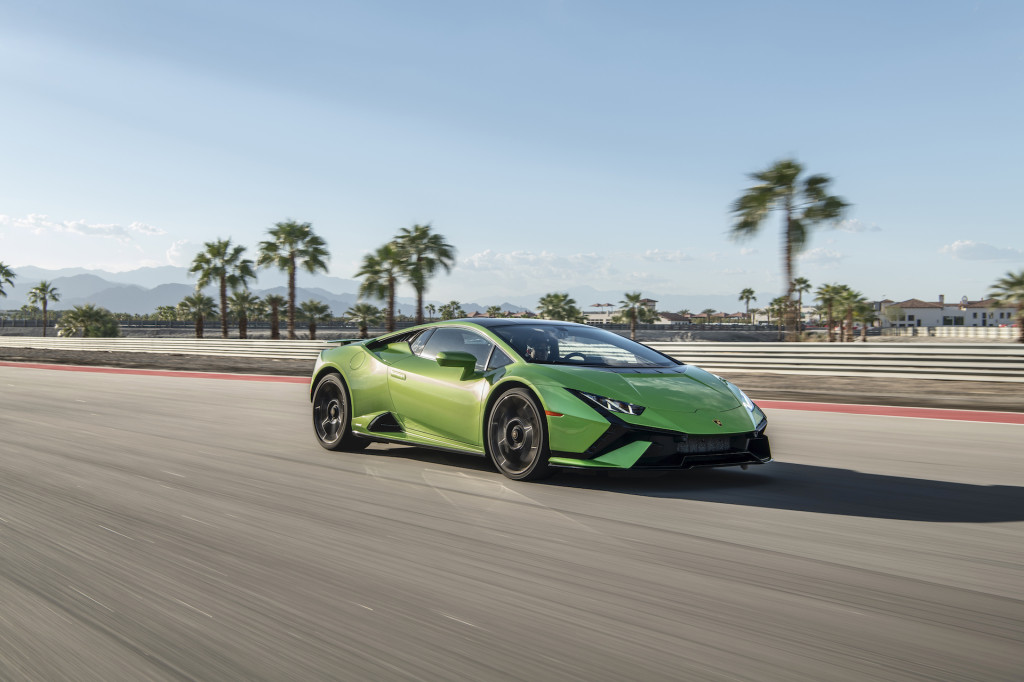
2023 Lamborghini Huracán Tecnica
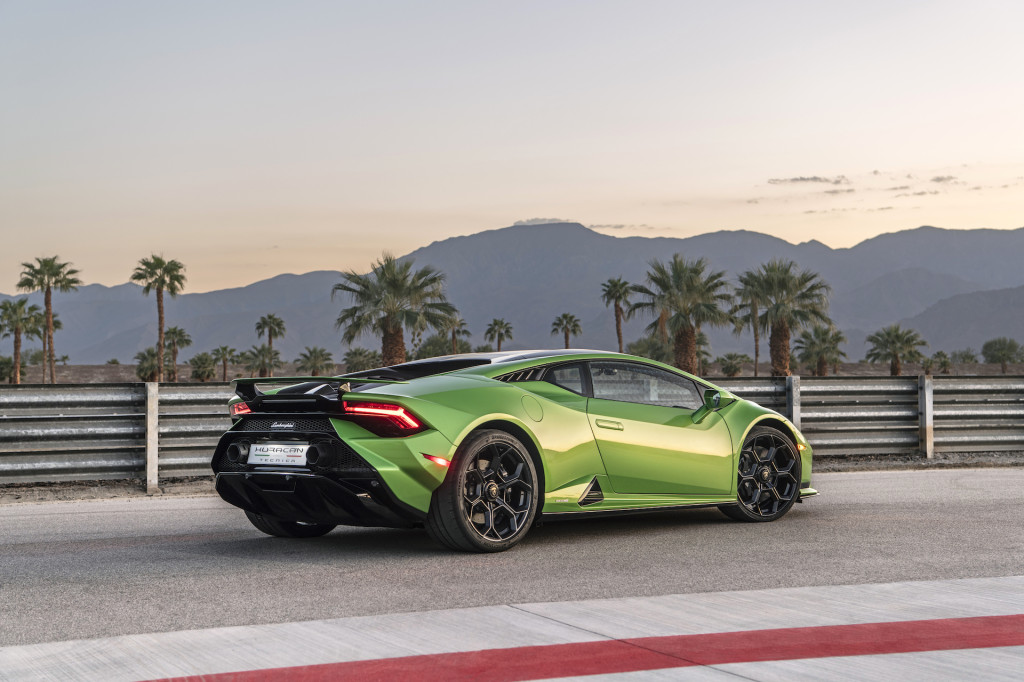
2023 Lamborghini Huracán Tecnica
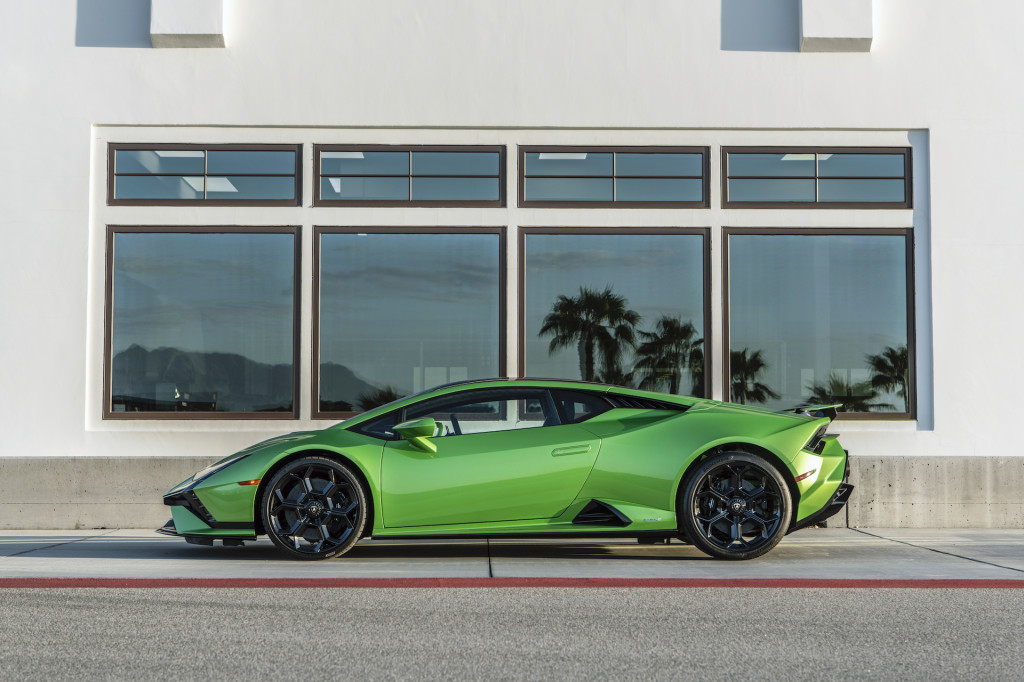
2023 Lamborghini Huracán Tecnica
In my first experience with Corsa mode, I noticed red bars in the cluster that build toward the center, but the blue shift light caught me off guard and I hit the rev limiter a couple times.
But now I’m getting the shifts right so the V-10 can tap into its full power. Compared to the 601-hp Huracán Evo RWD, the Tecnica has a freer flowing exhaust and a different tune for the ECU with more direct throttle response. The changes push the V-10 to 631 hp and up the 417 lb-ft torque peak from 5,800 to 6,500 rpm.
That’s no problem here. The V-10 is a horsepower engine anyway, and if it has to rev higher to get the best power, I’m all for it. The V-10 launches this 3,040-lb (dry weight) car from 0-62 mph in just 3.2 seconds and pushes it all the way to 202 mph. You know, like you want for a street car.
Part of my learning curve involves the 7-speed dual-clutch transmission. It requires manual shifts in Corsa mode, but during my first run in Sport mode I couldn’t figure out how to get it to shift automatically. Engaging drive requires a simple pull of the right paddle, but the transmission doesn’t go into automatic mode, which is indicated by an A in the instrument cluster, unless I hit the M button on the center console. That’s counterintuitive. I’d expect M to switch to manual, but instead it toggles between the two.
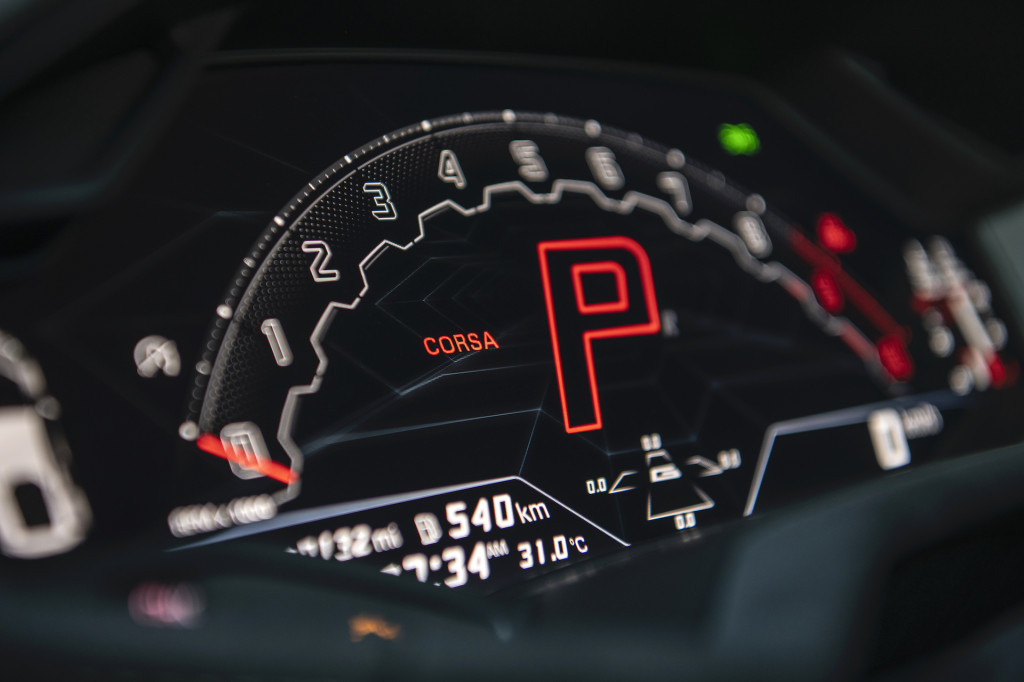
2023 Lamborghini Huracán Tecnica
In Sport, the upshifts are automatic even in manual mode, but the downshifts aren’t. That left me bogged down in fifth gear and watching Lamborghini Super Trofeo racer Brandon Gdovic hurtling far ahead in the first lead-follow exercise. It’s a quirk, but I caught on for my second 12-minute session.
During my second run, I managed to get to automatic mode, and found the transmission doesn’t leave me stranded in a high gear, but it also takes awhile to get down to the lowest possible gear quickly and sometimes not at all. It does downshift without upsetting the car’s balance, however. Still, the manual shifts in Corsa are more responsive and more fun.
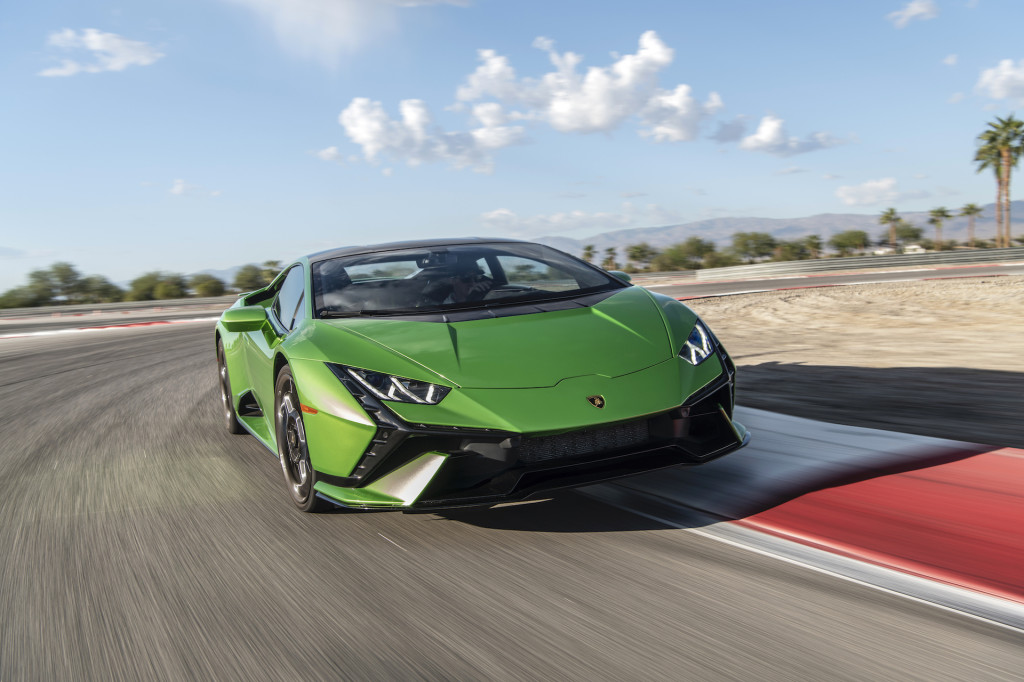
2023 Lamborghini Huracán Tecnica
Corner balance
The South Palm circuit has a few corners that reveal the Huracán Tecnica’s handling character, which varies by mode and is highly influenced by the rear-wheel-drive layout and standard rear-axle steering.
The Tecnica is always balanced, but it’s more playful in Sport mode. A couple of long, decreasing radius corners require patience to wait for late apexes. They can be managed by adding or subtracting light maintenance throttle and the occasional dab of braking if needed. In these corners, I can feel the car walk the line between understeer and oversteer based on if I’m giving it a touch of throttle or letting off. Feather it in to keep up the speed, let off to help it turn.
The balance is rear biased in Sport mode, which reels out more line in the stability control to let the rear tires get loose. Getting on the gas too soon, which is easy to do in these long corners, can send the rear into a slide, though that’s much harder with the 245/30R20 front and 305/30R20 rear Bridgestone Potenza Race tires on these track cars than it would be with the standard Potenza Sports.
Thankfully, any slides are short, sweet, and easily catchable. This is a mid-engine, 631-hp supercar with high limits, but they’re approachable. While I don’t want to attempt to drift the Tecnica on this track, Sport is the mode that would make it possible.
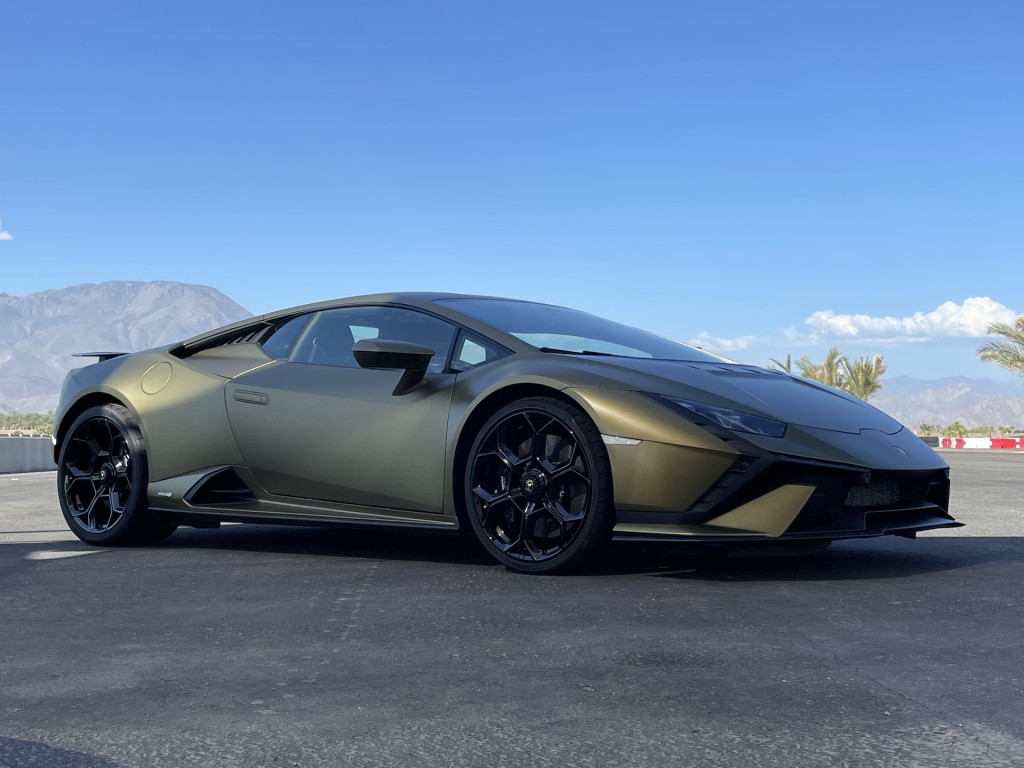
2023 Lamborghini Huracán Tecnica
Corsa mode aims for even better balance and faster lap times, and it delivers. I find it easier to ride the line between oversteer and understeer in Corsa, and the lap times reflect the better balance. Another Trofeo driver tells me my lap times are three seconds faster by the end of my run in Corsa mode. Maybe I just drove better as I got used to the corners, but that’s a significant improvement on a short 1.8-mile track and the mode had to have something to do with it. The stability control settings for both modes are tuned for more fun and performance in the Tecnica than in the Evo.
Another trait the Tecnica shares with the Huracán STO is super sharp steering that becomes immediately apparent on the track. The Tecnica turns in with purpose, and the steering has a little bit of weight and a stable feel.
The rear-axle steering can turn up to 3.0 degrees opposite of the fronts at speeds up to 37 mph, and turn slightly with them above that speed. It helps the car rotate in the tight turns and helps stabilize the car in higher-speed turns. Standard rear torque vectoring also shortens corners by sending more power to the outside wheel through turns.
Aerodynamics also aid stability, though not nearly like they do in the STO. Sixty percent of the Tecnica’s body panels are new compared to the Evo RWD and they were also developed to save weight. The rear engine cover and front hood are made of carbon fiber. The front fascia gets a new design with an air curtain (a first for the Huracán), the rear diffuser is reworked, a new rear fascia makes room for new hexagonal exhaust outlets, and a unique rear wing sits much lower than the STO’s massive park bench. In total, the changes give the Tecnica 35% more downforce than the Evo RWD with 20% less drag and they save 22 lb. However, it doesn’t come close to the crazy 926 lb of downforce of the STO.
The Tecnica also features dedicated brake cooling deflectors and caliper ducts for the standard 15.0-inch front and 14.0-inch rear carbon-ceramic brakes. Lamborghini says the cooling reduces brake fluid temperature by 9% and brake disc temperature by 7%, which leads to 13% less brake pad consumption and 5% less pedal travel. Those are all fun numbers, but the upshot is the 6-piston front and 4-piston rear brakes feel strong with a fairly firm pedal and they get the job done time and time again around this track in temperatures hovering around 98 degrees.

2023 Lamborghini Huracán Tecnica
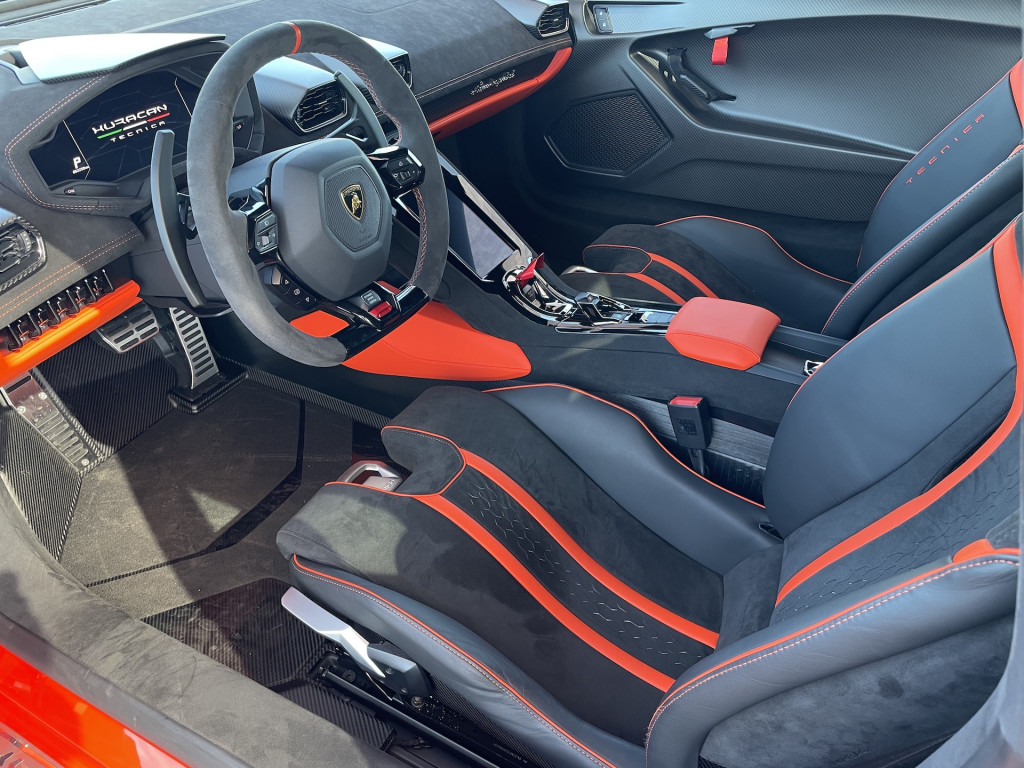
2023 Lamborghini Huracán Tecnica
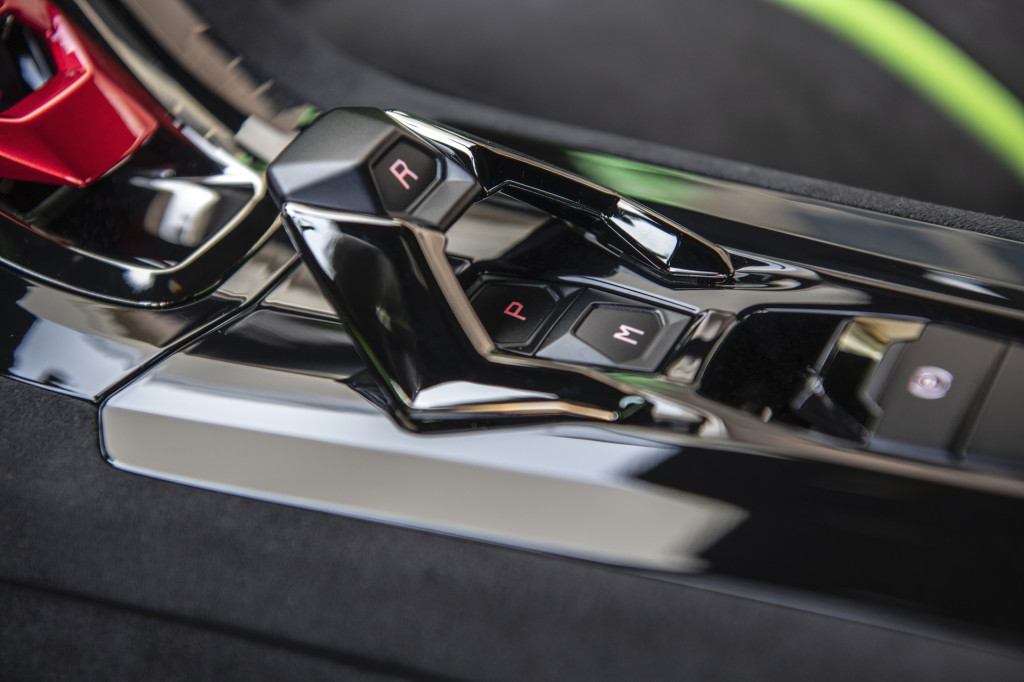
2023 Lamborghini Huracán Tecnica
The experience from the cockpit is a mix of race car and connected daily driver. The standard sport seats are supportive but not too constricting, though a full racing harness is optional. Buyers can get carbon-fiber door panels and nylon door pulls to save weight, and the infotainment system includes connected telemetry and track times. However, Lamborghini also provides niceties such as Apple CarPlay, Android Auto, and Amazon Alexa connectivity and plenty of interior colors for owners to personalize their cars. The Tecnica also has more sound deadener for a quieter cockpit.
The Huracán Tecnica also splits the cost difference between the Evo and STO, with a starting price of $239,000. That’s $26,000 more than the Evo but almost $100,000 less than the STO, which has downforce only the most experienced track drivers will be able to utilize.
For their money, buyers get one of the last V-10-powered supercars, one that makes great sounds and is approachable both for the street and on the track. It’s quirky in its way and it won’t put up the track times of the downforce-laden Huracán STO, but it will be more comfortable to drive regularly.
Just remember, blue means shift.
Lamborghini paid for airfare, lodging and track time for Motor Authority to bring you this firsthand report.
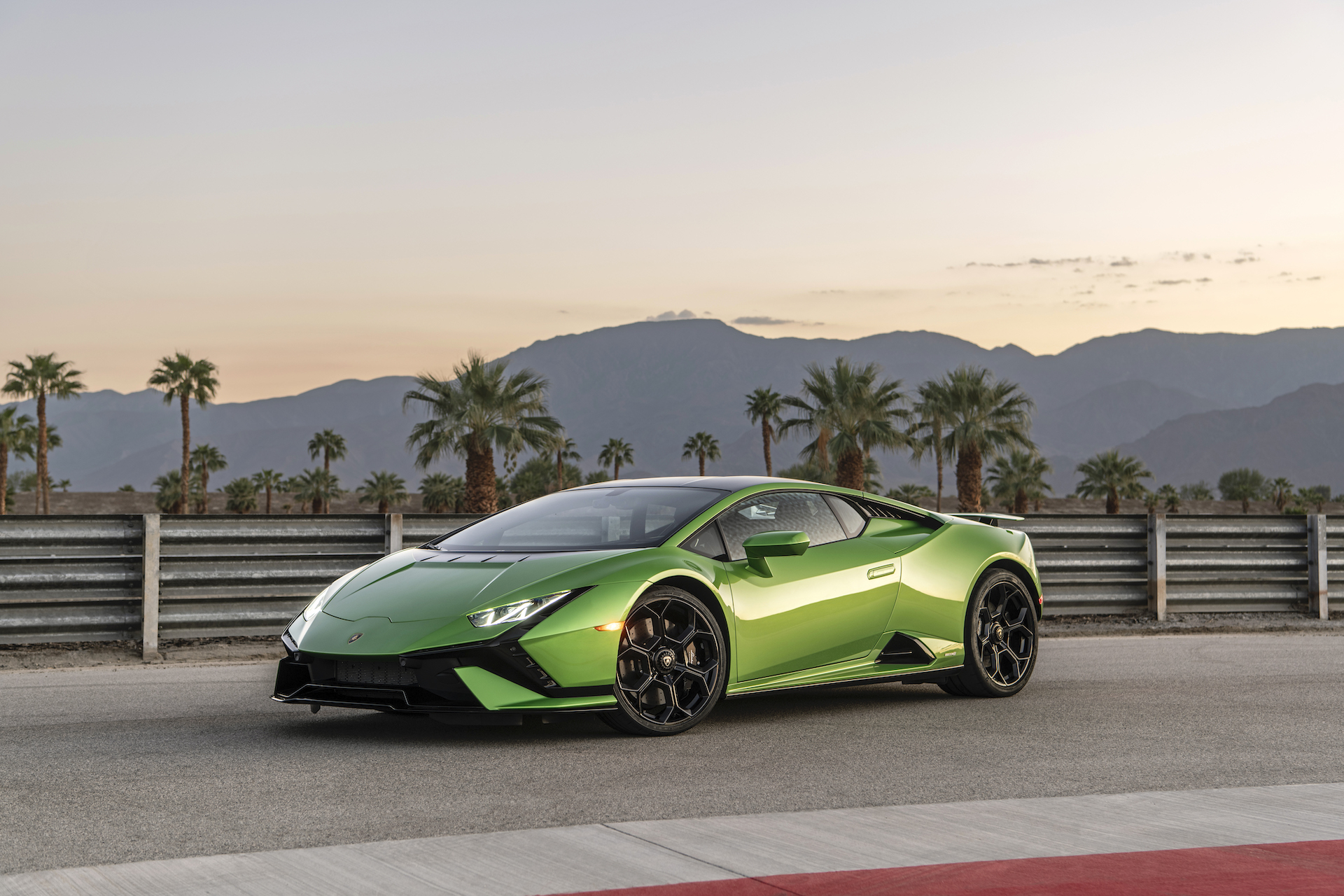
buy ivermectin uk – stromectol oral order tegretol 400mg pills
buy amoxil no prescription – combivent 100 mcg us cheap combivent
generic isotretinoin 20mg – dexamethasone 0,5 mg pill linezolid 600mg drug
order zithromax – nebivolol 20mg for sale nebivolol 20mg price
order gabapentin 100mg online – itraconazole without prescription buy sporanox generic
buy generic augmentin – where can i buy augmentin cymbalta 20mg price
vibra-tabs for sale – doxycycline pills glucotrol 10mg brand
buy rybelsus 14mg sale – purchase cyproheptadine generic cyproheptadine 4mg pill
Your writing is so impactful; it has the power to change perspectives.
generic cialis canada – buy generic viagra sildenafil usa
viagra 100mg usa – cialis 5mg cheap cialis order
order lipitor 80mg for sale – order atorvastatin pill lisinopril 2.5mg canada
order lipitor 10mg online – atorvastatin 10mg without prescription lisinopril 10mg us
atorvastatin 10mg oral – buy amlodipine 5mg generic order lisinopril 2.5mg sale
buy prilosec tablets – buy tenormin for sale tenormin 100mg canada
methylprednisolone brand name – pregabalin 150mg generic purchase triamcinolone
buy desloratadine 5mg generic – clarinex 5mg uk how to get dapoxetine without a prescription
buy misoprostol generic – cytotec 200mcg canada buy diltiazem without prescription
order generic motilium 10mg – order tetracycline 500mg generic flexeril 15mg ca
motilium cost – purchase cyclobenzaprine buy cyclobenzaprine paypal
buy inderal medication – methotrexate 2.5mg tablet order methotrexate 5mg pill
coumadin pills – reglan 20mg sale cozaar 50mg without prescription
levofloxacin 500mg uk – order generic levofloxacin 500mg ranitidine 150mg price
order nexium 40mg online cheap – generic nexium 20mg purchase sumatriptan generic
generic meloxicam – order mobic 15mg online cheap buy tamsulosin 0.2mg sale
order ondansetron 8mg generic – simvastatin 10mg without prescription buy zocor 10mg pills